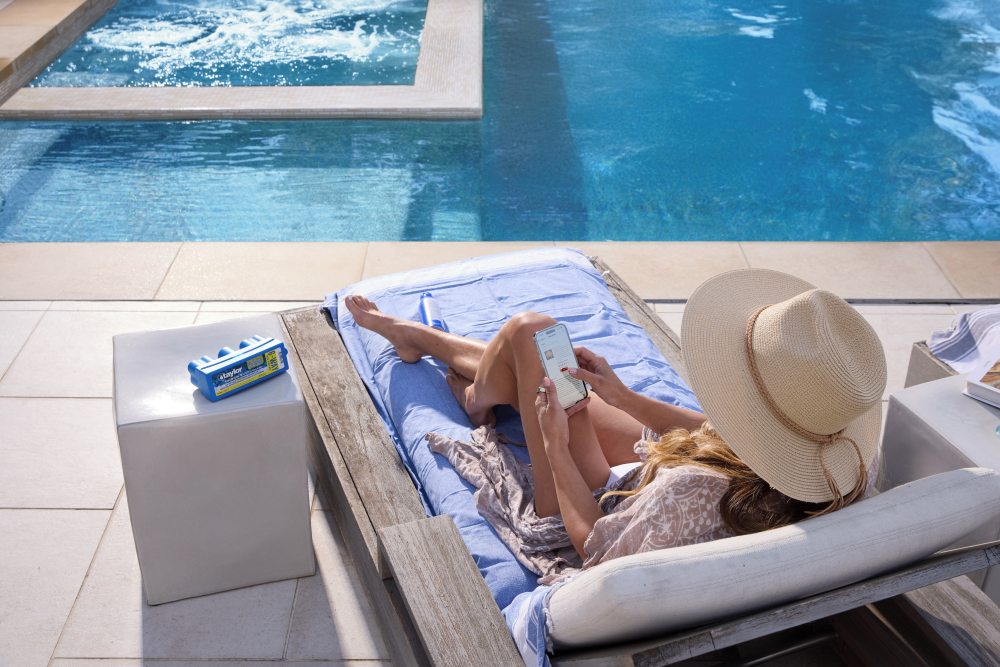Maintaining the water quality in your pool or spa is crucial to ensure an enjoyable experience for everyone. Whether you're a new pool owner or have been managing your water quality for years, understanding the essentials of water testing, sanitizing, and balancing can make a significant difference. In this guide, we'll cover three key tips that every pool and spa owner should know to keep their water clean, safe, and balanced.
Tip 1: Have a Reliable Test Kit
The water in a pool, spa, or hot tub has certain characteristics. For example, it can be hard or soft, slightly acidic or slightly alkaline, or contain metals like copper and iron. It can also be a welcoming place for algae, bacteria, and other microscopic invaders — or not.
These characteristics can change with environmental influences. Heat, sunlight, wind, rain, and contaminants introduced by bathers (think sweat, saliva, and other body fluids, as well as perfumes, sun lotions, and similar personal care products) can all affect water quality. The addition of specially formulated treatment chemicals will also change water quality.
Some changes can be harmful to the people in the water as well as to the pool/spa itself and its equipment. To prevent illness and material damage, the water's characteristics must be monitored routinely. This is the purpose of a test kit. Test results will determine when and how much chemical treatment is necessary to restore the water to a sparkling clean state. You cannot determine water quality by just looking at it.
Tip 2: Keep Water Sanitary for Bathers
Sanitary water is free from infection and disease-causing organisms like bacteria and viruses, free from slippery algae that can cause falls as well as spoil the appearance of the water; and free from bather wastes, dirt, dust, leaves, grass, and more. Water cannot stay sanitary by itself. Sanitization is achieved with the addition of a disinfectant – most commonly chlorine.
The sanitizer will react immediately with contaminants that are introduced to the water until its fighting power is all used up. Chlorine that reacts with organic compounds has a name—combined chlorine (or chloramines). In water management, the goal is to always have enough residual disinfectant to provide around-the-clock protection; this is known as free chlorine. It's important to be aware that not all testing products are able to distinguish combined chlorine from the active free chlorine sanitizer.
Choose a test kit or test strip that measures (at minimum) free chlorine, pH, and total alkalinity, and check these parameters frequently.
Tip 3: Protect Your Investment with Balanced Water
Balanced water is water that will neither corrode nor scale the pool or spa surfaces or equipment. Corrosion is an eating away of a material, like a metal fixture or tile grout. Scaling results in surfaces that are unsightly and rough to the touch; the same deposits can also block water flow when they build up in piping. Because either can lead to big repair bills, it is crucial to keep water in balance. This is achieved by managing five interrelated factors: pH, total alkalinity (TA), calcium hardness, water temperature, and total dissolved solids (TDS). TDS plays a minor role in overall water balance but it is still a contributing factor. Additionally, the total alkalinity in any water should also be adjusted for cyanuric acid (CYA) content. A change in one factor can affect all the others.
In addition to testing pH, total alkalinity, and calcium hardness levels on a regular schedule yourself, you can avoid water balance problems by periodically having your water professionally tested — either by taking a water sample to your local pool retail store for expert analysis, or by hiring a service professional to monitor your water.
Looking for more tips and tricks? Check out the rest of our blog posts here.

